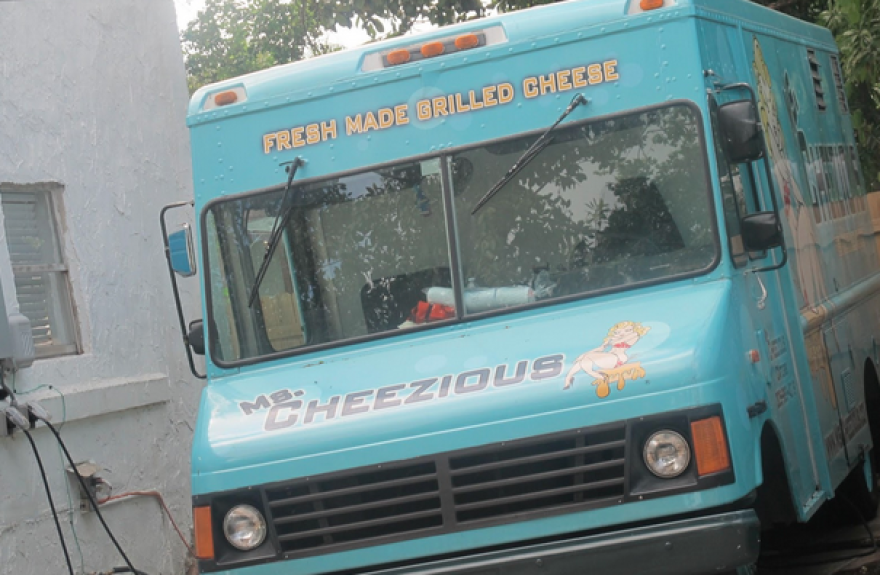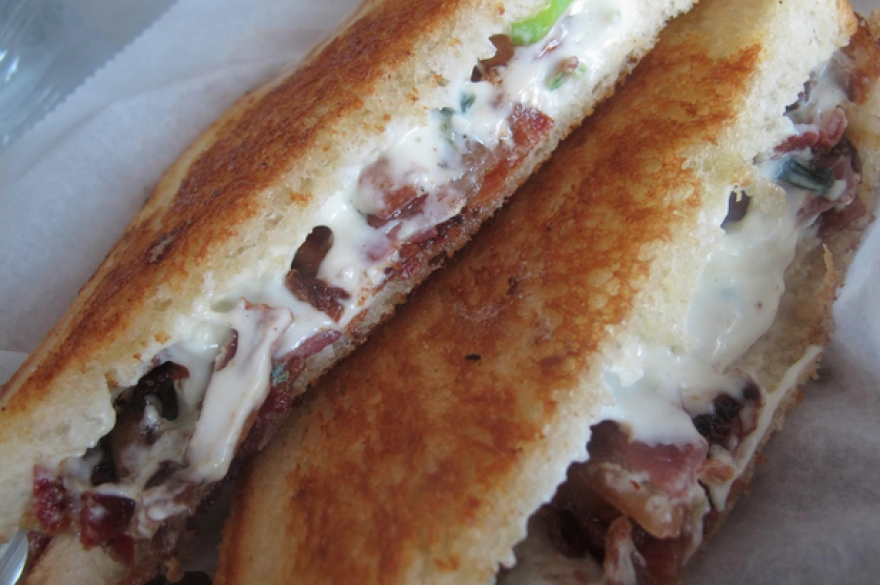Ms. Cheezious’ gooey grilled cheeses made the food truck a household name among South Florida foodies within a year on the road.
But for a few months, fans have also been ordering Cheezious from a static location: The owners of the locally beloved truck opened a permanent eatery in February.
It’s located on Biscayne Boulevard in Miami, and its jam-packed grand opening suggested the the restaurant would have no problems handling its fanbase.
“We’ve gotten an overwhelming positive response from people about their experience so far here,” said Brian Mullins, one of Ms. Cheezious’ operators.
The truck first hit South Florida roads in late 2010, and the basic concept -- a grilled cheese, fries, and a soda -- sold itself. Within a year Mullins had a second truck, and soon Ms. Cheezious became an award-winning mobile grub house.
With all that success, it seemed opening a restaurant was the next step on the ladder.
“I think it was just the next progression of what we wanted to do,” Mullins said. “The trucks are great, but to really cement our brand, we needed to have a home base for them.”
“Sometimes we don’t get out to the outskirts of Kendall or Wilton Manors, or the areas that we need to get to, because we’re busy. So this gives everybody an opportunity to come down and see us,” said Christian Dickens, another owner.

Food trucks can certainly be tricky. They’ve got wheels -- so if you want a fix of your favorite truck, you might have to hunt it down.
“You had to watch the Twitter feed, you had to follow that person, you’re constantly teased by pictures of food and retweets and things like that. And then you have to find them at an event,” says restaurateur Richard Hales. He owns Sakaya Kitchen and Blackbrick in midtown Miami.
Unlike Ms. Cheezious, Hales opened a food truck after starting his first restaurant. In 2010, he expanded Sakaya Kitchen’s concept into the mobile Dim Ssäm à gogo.
“The food truck, it’s much easier to launch. It’s less expensive. You could spend on the entire food truck less than you could spend on a commercial kitchen in a brick-and-mortar restaurant,” Hales says.
Hales says he spent over five times as much money opening Blackbrick than he did opening Dim Ssäm à gogo. Food service strategist Dennis Lombardi says running a truck will also generally cost less money.
“You can rent or lease one of these food trucks for $3,500, maybe $4,500 a month,” Lombardi says. “Typically, you can get as little as a 12 month lease... if the restaurant doesn’t go as planned, it is a lot easier to get out of a food truck lease than it is to get out of a bricks and mortar lease.”
To simplify, starting a food truck entails a smaller risk than starting a restaurant.
“I think that sometimes when they start, they have limited funds, and they think [they] can test [their] concept with a food truck,” says Sef Gonzalez, who blogs as the Burger Beast. Gonzalez hosts food-related events in South Florida -- including the annual Burgie Awards.
Gonzalez, Hales and Mullins agree trucks are often stepping stones toward restaurants. But Gonzales says he knows of a few trucks that have been around for a while and don’t seem to be planning to expand.
“They just love being a food truck,” he said. “They love the freedom of being at a different spot every day.”
It’s possible that these proprietors are just content with offering their consumers the experience of a truck instead of a restaurant. There are some differences -- namely how food is prepared and consumed.
“If it’s a full dish in the restaurant, we may turn it into a sandwich or a taco for the food truck,” Hales says. “You think about those things — what could somebody stand and eat with their hands, without using utensils, without the need to sit down? That plays a big part in designing a food-truck menu.”
“You’re not going to catch too many people wanting to walk around with a bowl of spaghetti and meatballs,” Gonzalez says.






